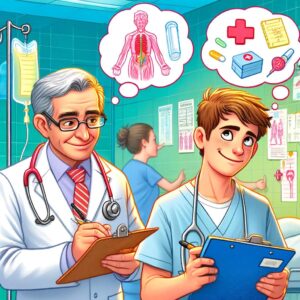
In my decade+ helping applicants get into their dream medical schools, I have revised probably 500+ Work & Activities sections. I’ve discovered that even applicants who spend weeks, or even months, building and fine-tuning their personal statements will treat the Work & Activities section almost as an afterthought. The drafts they send are rife with grammar errors, and often they assume they don’t even need to write in complete sentences.
This is a big mistake.
When you’re filling out your AMCAS Work & Activities section, it’s crucial to put as much thought into it as you would a cover letter or a personal statement. This section is your opportunity to illustrate your experiences, demonstrate your growth, and reflect on how these activities have prepared you for a career in medicine. If the personal statement is a single, deep introduction to who you are and what you value, then the W&A is your opportunity to complement that depth with well-considered breadth. It is a crucial part of your application, and you need to give it serious thought. Yesterday, I wrote about how you can go about selecting your three “Most Significant” activities for mini-essays, but today I want to focus on the other items that you include.
Here are some strategies to make your Work & Activities section stand out.
Write in Full Sentences
Resist the temptation to use “resume shorthand.” While bullet points and concise phrases might be suitable for a resume, the AMCAS application is not the place for them. People often write in shorthand incomplete sentences because they want to say more, but you’re always better off saying a bit less but saying it much better. Write complete sentences that clearly describe your role, responsibilities, and contributions. This approach helps the reader understand the context of your experiences and the impact you made.
Care About Verb Choice
Choosing the right verbs can transform a simple activity description into a vivid account of your involvement. Powerful verbs like “led,” “developed,” “initiated,” and “collaborated” paint a picture of active engagement and responsibility. Whenever you see a “to be” (am, was, were, is, etc.) think about whether you can replace it with something more vivid and active. By focusing on action-oriented language, you highlight what you did, not just your title.
Focus on Learning and Improvement
Medical schools are interested in candidates who learn from their experiences and show personal growth. When describing your activities, consider what you gained from each experience. Did you develop new skills, overcome challenges, or gain insights into the medical field? Share these learnings to give admissions committees a sense of your journey and evolution.
Connect Activities to Medical School Preparation
While you don’t need to explicitly state how an activity prepared you for medical school, it’s helpful to think about this connection when writing your descriptions. If a particular experience had a significant impact on your decision to pursue medicine or taught you valuable skills for your future career, consider weaving that into your narrative.
This approach adds depth to your application and shows a clear link between your experiences and your medical aspirations.
Use Adjectives to Guide Your Writing… but keep most of them out of your entries
Before you write each entry, think about 3-5 adjectives you want to convey about yourself.
These could be qualities like “compassionate,” “dedicated,” “innovative,” or “team-oriented.” Let these adjectives guide your word choice and the aspects of your experience that you emphasize. This strategy helps maintain consistency and ensures that your descriptions align with your overall message. That said, your writing needs to be lean, so the words themselves likely won’t make the cut as you trim to meet the 700-character caps. But if you start out thinking about these descriptors as your North Star, they will come across in the text.
Write Like You Talk
Avoid stilted language or industry jargon that might sound insincere. Medical school admissions committees appreciate clarity and authenticity. Write in a conversational tone that reflects your personality and avoids excessive technical terms or jargon. This approach helps create a more engaging narrative and ensures your descriptions are accessible to all readers. If you wouldn’t use a word in your everyday life, don’t use it in your essay. A good way to identify stilted language is to read your text aloud to a friend and have them note places that don’t sound like you. You can also do the same by recording yourself reading it, then listening back. Moments that give you the “icks” might be indicative of them not being authentic to your voice.
Additional Tips
– Be Specific: Provide concrete examples to illustrate your points. Instead of saying “I participated in research,” describe the project, your role, and any outcomes.
– Keep It Concise: While you want to use full sentences, avoid unnecessary verbosity. Aim for clear, succinct descriptions that get to the point.
– Review and Revise: Proofread your entries for grammar, punctuation, and clarity. Consider asking a mentor or advisor to review your Work & Activities section for feedback. Of course, we at Gurufi are experts at revising these texts, including trimming down overly long entries to fit the caps!
With these tips in mind, you can create a compelling Work & Activities section that effectively communicates your experiences, growth, and readiness for a career in medicine. Good luck!
For more help with your personal statement, check us out at Gurufi.com. Our personal statement editors and consultants have decades of experience helping clients get into top medical schools. Our specialty is helping you craft compelling personal statements that move the needle in your admissions process! For questions, shoot us an email at service@gurufi.com. Check us out on Facebook, Twitter, and LinkedIn.









